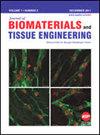不同最终顶端制备直径对光子诱导光声流(PIPS)去除顶端三分之一涂抹层效率的影响
IF 0.1
4区 医学
引用次数: 0
摘要
目的:在涂片层(SL)上使用不同最终根尖制备直径的光子诱导光声流(PIPS)作为常规灌洗(CI)的辅助手段。材料和方法:从40颗标准根长为18 mm的下颌磨牙上取下临床冠。打开腔室,建立直线通道,工作长度保持在离顶点1mm的距离。按最终根尖直径随机分为4组。组1 (F1+CI+PIPS)、组2 (F2+CI+PIPS)、组3 (F3+CI+PIPS)、组4 (F3+CI)(对照组)。CI方案(2.5% NaOCl+17% EDTA+2.5% NaOCl+蒸馏水)。扫描电镜(SEM)对根管顶端三分之一处5000x牙本质小管的开放情况进行了评估。采用方差分析和Tukey’s HSD检验进行数据分析(p = 0.05)。结果:组3 (F3+CI+PIPS)对根管顶端三分之一的SL去除的平均评分最高(3.64±0.50)。而组1 (F1+CI+PIPS)平均评分最低(1.27±0.47)。组间比较分析显示,F2+CI+PIPS组1和2组(F2+CI+PIPS)的SL去除率最低且最具可比性(p >0.05)。结论:光子诱导光声流可作为一种辅助治疗,从根尖三分之一开始提高涂片层的清洁度。本文章由计算机程序翻译,如有差异,请以英文原文为准。
The Impact of Different Final Apical Preparation Diameters on the Efficiency of Photon-Induced Photoacoustic Streaming (PIPS) in Removing the Smear Layer at the Apical Third
Aims: Photon-induced Photoacoustic streaming (PIPS) as an adjunct to conventional irrigation (CI) using different final apical preparation diameters on smear layer (SL) Material and method: Clinical crown was removed from forty human mandibular molars standardizing root
length to 18 mm. Chamber was opened and straight-line access was established Working length was kept 1 mm short of the apex. Teeth were randomly divided into 4 investigated groups based on the final apical diameter. Group-1 (F1+CI+PIPS), Group-2 (F2+CI+PIPS), Group-3 (F3+CI+PIPS) and Group-4
(F3+CI) (Control). CI protocol (2.5% NaOCl+17% EDTA+2.5% NaOCl+distilled water). SEM magnification of 5000x dentinal tubules’ patency at the apical third of root canals was assessed. ANOVA and Tukey’s HSD test were used for data analysis (p = 0.05) Results: Group-3
(F3+CI+PIPS displayed the highest mean scores (3.64±0.50) of SL removal from the apical third of the canal. However, Group-1 (F1+CI+PIPS) exhibited the lowest mean scores (1.27±0.47). Intergroup comparison analysis revealed that Group 1 and Group 2 (F2+CI+PIPS) presented the
lowest and most comparable SL removal (p >0.05) Conclusion: Photon-induced Photoacoustic streaming should be considered as an adjunct therapy to improve the cleanliness of the Smear layer from the apical third.
求助全文
通过发布文献求助,成功后即可免费获取论文全文。
去求助
来源期刊

Journal of Biomaterials and Tissue Engineering
CELL & TISSUE ENGINEERING-
自引率
0.00%
发文量
332
审稿时长
>12 weeks
 求助内容:
求助内容: 应助结果提醒方式:
应助结果提醒方式:


